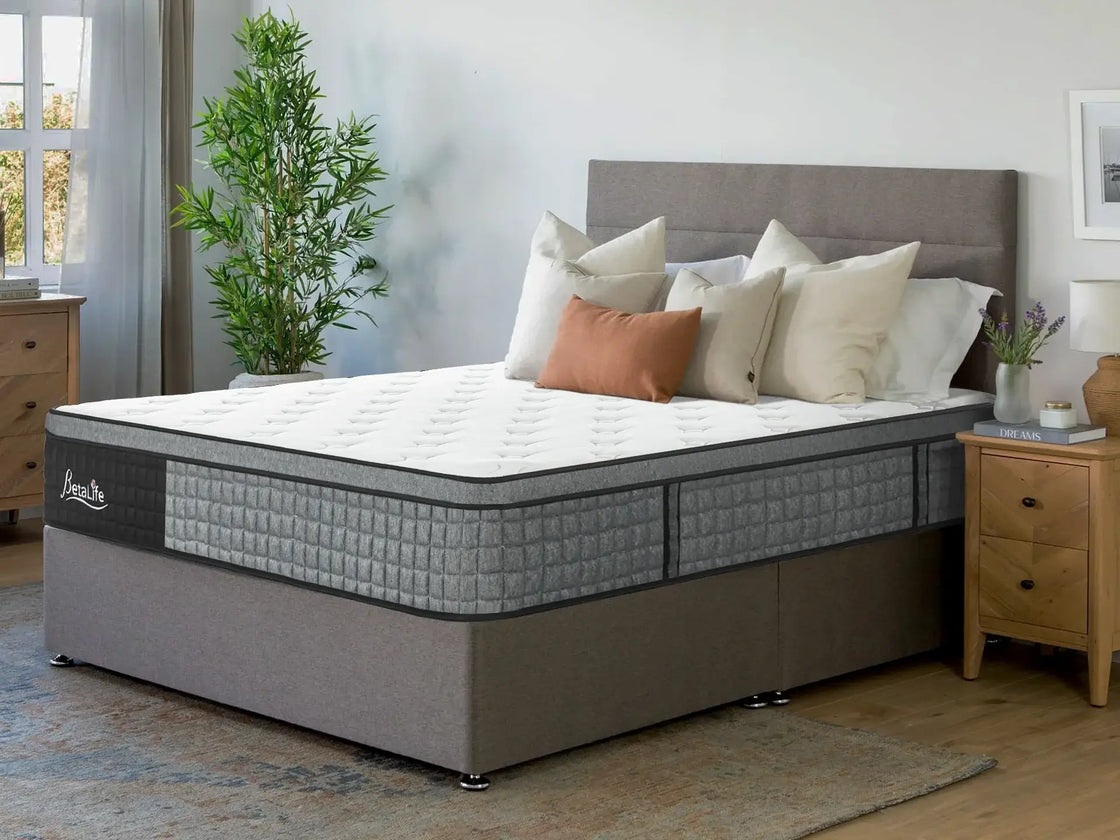Choosing the Right Mattress: A Comprehensive Guide for Better Sleep and Health

Selecting a mattress is a crucial decision that impacts not only your sleep quality but also your overall health, including mental well-being and physical performance. With a wide array of materials, firmness levels, and sizes available, it’s essential to understand the key factors involved in this choice.
1. Understanding Mattress Types
Before making a purchase, familiarize yourself with the different mattress types available:
-
Memory Foam: Renowned for contouring to your body’s curves, memory foam effectively distributes weight and alleviates pressure points, making it ideal for side sleepers and those with joint issues.
-
Innerspring: Featuring coils at their core, innerspring mattresses provide a bouncy, supportive feel and better airflow, which is beneficial for hot sleepers.
-
Hybrid: Combining the advantages of both memory foam and innerspring mattresses, hybrids typically have a foam layer over a coil system, accommodating various sleep habits and needs.
-
Latex: Available in natural and synthetic options, latex mattresses offer durable, responsive support and are hypoallergenic, making them great for individuals with sensitivities.
2. Evaluating Firmness Levels
Determining Optimal Firmness
Firmness is crucial for ensuring both comfort and support. Here’s a general guide to firmness levels on a scale from 1 (very soft) to 10 (very firm):
-
Soft (1-3): These mattresses provide significant contouring and plushness, appealing to side sleepers by minimizing pressure on the shoulders and hips.
-
Medium (4-6): This range strikes a balance between comfort and support, making it suitable for back and combination sleepers.
-
Firm (7-10): Firm mattresses offer extra support, beneficial for stomach sleepers and heavier individuals, as they help maintain spinal alignment.
Expert Insight: Your primary sleeping position should guide your firmness choice. Side sleepers typically prefer softer mattresses, while back and stomach sleepers should opt for firmer options.
3. Material Considerations
Assessing Material Benefits
The material of a mattress significantly impacts comfort, durability, and maintenance:
-
Memory Foam: Excellent for motion isolation but can retain heat. Gel-infused varieties are available for better temperature regulation.
-
Innerspring: Traditional support and durability are hallmarks of these mattresses. The quality of the coils is vital for longevity.
-
Latex: Known for durability and bounce, latex mattresses are naturally resistant to allergens, making them ideal for allergy sufferers.
-
Hybrid: Combining foam comfort with coil support, hybrid mattresses provide versatility. High-quality foam and coil systems enhance performance.
Consumer Feedback: Many report that latex or hybrid mattresses offer improved support and breathability, leading to better sleep quality.
4. Size: Dimensions of a New Zealand Mattress
Choosing the right mattress size is essential for comfort and practical considerations. Here’s a summary of standard New Zealand mattress sizes:
-
Single (92 cm x 188 cm): Ideal for children or those with limited space.
-
King Single (106 cm x 203 cm): Suitable for taller individuals or those who prefer extra room.
-
Double (138 cm x 188 cm): Provides ample space for couples or those who enjoy a bit more room.
-
Queen (153 cm x 203 cm): The most popular size, perfect for couples or anyone wanting more space.
-
King (168 cm x 203 cm): Ideal for couples and pet owners who like to sprawl.
-
Super King (183 cm x 203 cm): The largest standard size, great for those who want ample space.
Tip from Experts: Always measure your bedroom to ensure there’s enough space for the mattress and surrounding furniture.
5. Trial Periods and Warranties
What You Need to Know About Policies and Protections
A free trial period is a vital aspect of mattress purchasing. Reputable brands often offer sleep trials ranging from 30 to 120 nights, allowing you to assess comfort and support in your own home.
-
Return Policies: Understand the return policy before purchasing. A flexible return policy can alleviate concerns if the mattress doesn’t meet your expectations.
-
Warranties: Look for warranties that cover defects and sagging, typically lasting at least 10 years, indicating the manufacturer’s confidence in their product.
6. Budgeting for Your Mattress
Creating a Price Point That Makes Sense
Mattresses vary widely in price based on materials and brand reputation. While it’s wise to establish a budget before shopping, remember that investing in a quality mattress can significantly improve your sleep and health.
- Price Range: Entry-level mattresses start around $300 NZD, while premium options can exceed $2,000 NZD. Keep an eye out for seasonal sales to save money.
Expert Insight: Health professionals emphasize that a mattress is an investment in your well-being. Quality sleep is crucial for physical and mental health, so choosing the right mattress is essential.
Conclusion
When selecting a mattress, consider firmness, material, size, and your individual sleep preferences. The decision cannot be made lightly; it requires careful consideration of various factors. With this knowledge and insights from experts and consumers, you can choose a mattress that suits your needs for restful sleep.
At Betalife, we offer a wide variety of high-quality mattresses to meet diverse needs. From body-cradling memory foam to supportive innerspring models, our team of specialists is here to help you find the perfect solution. Request a quote today for personalized recommendations or browse our extensive selection!




